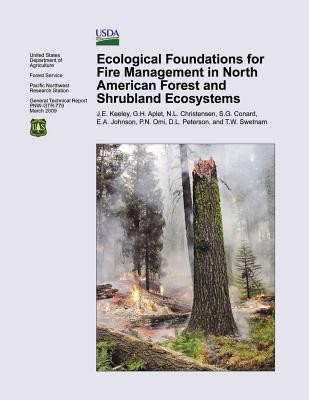
- We will send in 10–14 business days.
- Author: United States Department of Agriculture
- Publisher: CreateSpace Independent Publishing Platform
- ISBN-10: 1506028969
- ISBN-13: 9781506028965
- Format: 21.6 x 28 x 0.5 cm, softcover
- Language: English
- SAVE -10% with code: EXTRA
Ecological Foundations for Fire Management in North American Forest and Shrubland Ecosystems (e-book) (used book) | bookbook.eu
Reviews
Description
This synthesis provides an ecological foundation for management of the diverse ecosystems and fire regimes of North America, based on scientific principles of fire interactions with vegetation, fuels, and biophysical processes. Although a large amount of scientific data on fire exists, most of those data have been collected at small spatial and temporal scales. Thus, it is challenging to develop consistent science-based plans for large spatial and temporal scales where most fire management and planning occur. Understanding the regional geographic context of fire regimes is critical for developing appropriate and sustainable management strategies and policy. The degree to which human intervention has modified fire frequency, intensity, and severity varies greatly among different ecosystems, and must be considered when planning to alter fuel loads or implement restorative treatments. Detailed discussion of six ecosystems-ponderosa pine forest (western North America), chaparral (California), boreal forest (Alaska and Canada), Great Basin sagebrush (intermountain West), pine and pine-hardwood forests (Southern Appalachian Mountains), and longleaf pine (Southeastern United States)- illustrates the complexity of fire regimes and that fire management requires a clear regional focus that recognizes where conflicts might exist between fire hazard reduction and resource needs. In some systems, such as ponderosa pine, treatments are usually compatible with both fuel reduction and resource needs, whereas in others, such as chaparral, the potential exists for conflicts that need to be closely evaluated. Managing fire regimes in a changing climate and social environment requires a strong scientific basis for developing fire management and policy.
EXTRA 10 % discount with code: EXTRA
The promotion ends in 18d.05:12:03
The discount code is valid when purchasing from 10 €. Discounts do not stack.
- Author: United States Department of Agriculture
- Publisher: CreateSpace Independent Publishing Platform
- ISBN-10: 1506028969
- ISBN-13: 9781506028965
- Format: 21.6 x 28 x 0.5 cm, softcover
- Language: English English
This synthesis provides an ecological foundation for management of the diverse ecosystems and fire regimes of North America, based on scientific principles of fire interactions with vegetation, fuels, and biophysical processes. Although a large amount of scientific data on fire exists, most of those data have been collected at small spatial and temporal scales. Thus, it is challenging to develop consistent science-based plans for large spatial and temporal scales where most fire management and planning occur. Understanding the regional geographic context of fire regimes is critical for developing appropriate and sustainable management strategies and policy. The degree to which human intervention has modified fire frequency, intensity, and severity varies greatly among different ecosystems, and must be considered when planning to alter fuel loads or implement restorative treatments. Detailed discussion of six ecosystems-ponderosa pine forest (western North America), chaparral (California), boreal forest (Alaska and Canada), Great Basin sagebrush (intermountain West), pine and pine-hardwood forests (Southern Appalachian Mountains), and longleaf pine (Southeastern United States)- illustrates the complexity of fire regimes and that fire management requires a clear regional focus that recognizes where conflicts might exist between fire hazard reduction and resource needs. In some systems, such as ponderosa pine, treatments are usually compatible with both fuel reduction and resource needs, whereas in others, such as chaparral, the potential exists for conflicts that need to be closely evaluated. Managing fire regimes in a changing climate and social environment requires a strong scientific basis for developing fire management and policy.


Reviews